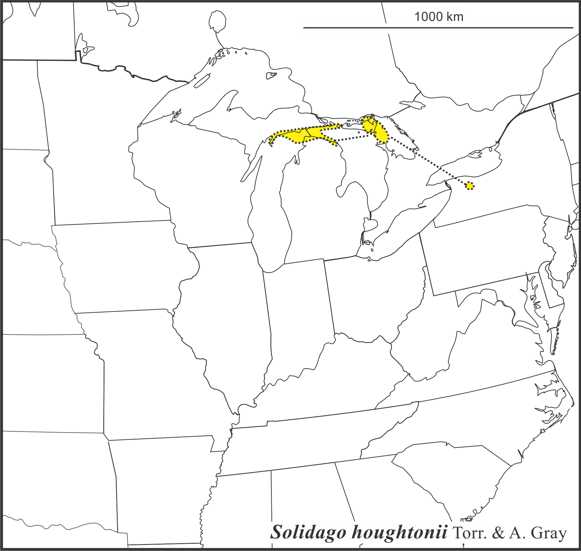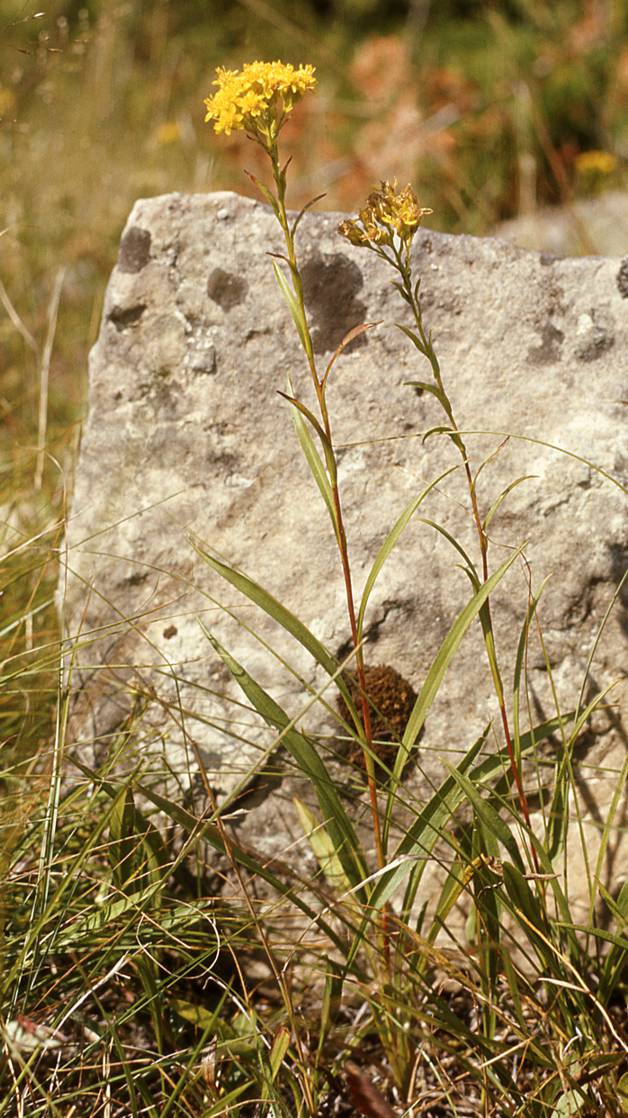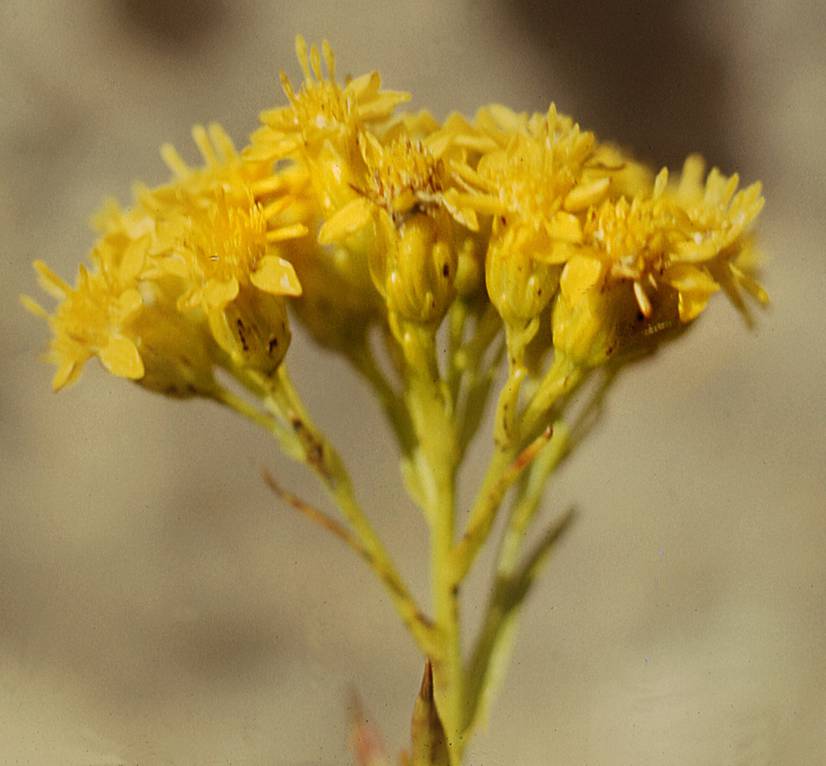Houghton's Goldenrod
Solidago houghtonii Torr. & A. Gray is a rare Great Lakes endemic native to wet depressions in sand dunes and limestone alvars in Michigan and Ontario and disjunct populations in western New York. The species is distinguished by its (5.5–)6–8(–9) mm high involucres and the 3-nerved (sometimes obscurely) lower and mid stem leaves (the 2 prominent lateral nerves arising proximally and running alongside the mid-nerve for some distance before abruptly diverging) and its usually 10–30 heads with multi-veined phyllaries (Semple & Cook 2006 FNA). Plants growing in wet dunes can be much more robust with many more heads than those growing on limestone alvars. It is the only hexaploid (2n=54) in sect. Ptarmicoides.
Solidago houghtonii can be difficult to distinguish from S. ohioensis × S. ptarmicoides hybrids because both have hairy peduncles in the arrays. The hybrids have pale yellow rays even when fresh; post-flowering rays of S. houghtonii can be pale yellow. Robust plants of S. houghtonii might be confused with S. ohioensis, which has much smaller involucres.
J.K. Morton (1979) hypothesized that the species was of allopolyploid origins. Laureto & Barkman (2005) presented molecular data suggesting surprisingly that S. gigantea of subsect. Triplinerviae might be one of the parents.
Solidago houghtonii is listed by the U.S. Fish and Wildlife Service as threatened in Michigan. It is in the Center for Plant Conservation’s National Collection of Endangered Plants.

Morton, J.K. 1979. Observations on Houghton's goldenrod (Solidago houghtonii). Mich. Bot. 18(1): 31-35.
Laureto, P.J. and T. Barkman. 2005. Analyses of four chloroplast DNA intergenic spacers reveal a maternal parent of the rare allopolyploid – Solidago houghtonii (Asteraceae). http://www.2005.botanyconference.org/engine/search/index.php?func=detail&aid=679
Last revised 10 April 2025 by J.C. Semple
© 2025 J.C. Semple, including all photographs unless otherwise indicated.
1-6. Solidago houghtonii. 1. Small plant, limestone alvar, Bruce Peninsula, Ontario. 2. Lower stem leaf, Macdonald 3860a WAT, Ontario. 3. Lower stem leaf, Line drawing by JCS. 4. Mid stem leaves, Jones 9622 WAT, Manitoulin Island, Ontario. 5. Inflorescence, Semple 2439, Bruce Peninsula, Ontario. 6. Involucre, Macdonald 3860a WAT.











